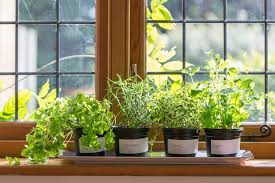“This content will educate you on the relationship and effect of Humidity, Mold and Indoor Gardens.”
Humidity, air quality and mold are the major problems for people who enjoy indoor gardening. Too high humidity will destroy plant growth and dry air is equally unfriendly to healthy plant growth. You have to balance this situation properly. Molds do well in high humidity and in the absence of direct sun. They usually cover the soil.
Below we are going to talk about the normal conditions where you can get the best results.
Humidity
Humidity refers to the relative amount of water available in the air at a particular time. This water present in the air varies by air temperature and the amount of sun. The less sunlight the greater amount of water the soil will hold. Every indoor plant survives in about 40 to 60 percent humidity. Humidity does fluctuate. When low humidity occurs, plant growth tends to be slowed. When this happens, we need to increase the humidity level. There are a number of ways to correct humidity.
Things needed for this:
- A tray made of plastic or glass.
- Marbles or Pebbles.
- Warm or cool mist humidifier.
- Small greenhouse or large aquarium.
Procedure:
First, mount the tray in the place you want it in your room. The best position will be at the indoor garden center. After putting your tray at the middle position, fill it with the marbles or pebbles. Now, begin to fill the tray with water until it reaches the pebble surface.
Pebble tray
The next stage is to put the embedded plant on the pebbles. This will hold the plant nearer to the tray which is most important at this time. The next thing is to keep observing the water level and refilling the tray as water evaporates. As the water evaporates into the air, it will indirectly raise humidity because the air contains this water in its molecules.

The more the water continues to evaporate into the air, the higher the humidity, so keep positioning plants close to the tray. Place the plants around the perimeter of the tray or the middle. The more water they absorb, the more positive impact it will have on them.
Place your humidifier close to your indoor garden. The humidifier will add more moisture to the garden air. Different types of humidifiers operate in different ways; cool mist humidifiers add cool moisture to the air. Some plants require cool moisture. If you have those plants, then a cool mist humidifier is the right option. On the other hand, warm humidifiers release hot moisture which can aid plants that grow better in warm atmospheres.
It is wise to position the indoor garden inside a place like a greenhouse. Look for any enclosed place as this will do a better job of trapping the moisture.
When adopting this technique, you have to make sure your tray is kept clean. Otherwise, you will battle with problems of mold. The humidifier should be cleaned for the same reason. As well, take note of changes in the humidity level with the aid of a hygrometer device.
Mold
Another problem you have to deal with is mold growth. This generally will grow on the soil surface and form a layer that prevents the soil from getting the needed light or oxygen, making your plants suffer. The major problem with mold is that it grows well in favorable humidity. As an indoor garden owner, you have to keep this situation under control. There are some simple things you can do to curb a mold problem.
Keep the surrounding area dry and clean. Make sure there is not too much humidity. Mold problems can easily be dealt with in the presence of low humidity. To automatically reduce the mold problem, use a dehumidifier to control the humidity level. Getting rid of the mold helps plants grow.
Indoor air
The quality of the air available is another factor for your indoor garden. There are a number of reasons why indoor air gets contaminated and affects the growth of plants. Your electronics like computers and some gadgets emit radiation that also contributes to indoor air pollutants. Aside from those, smokes, pesticide, and mold pollute indoor air. To keep a healthier atmosphere for your indoor garden, there are natural air purifiers that help to clear the polluted air. Common ones include Aloe Vera, Peace lily, English ivy, Boston fern, and Eucalyptus.
These are the common problems to face while handling indoor gardens. With the right steps, you can handle any problem!



